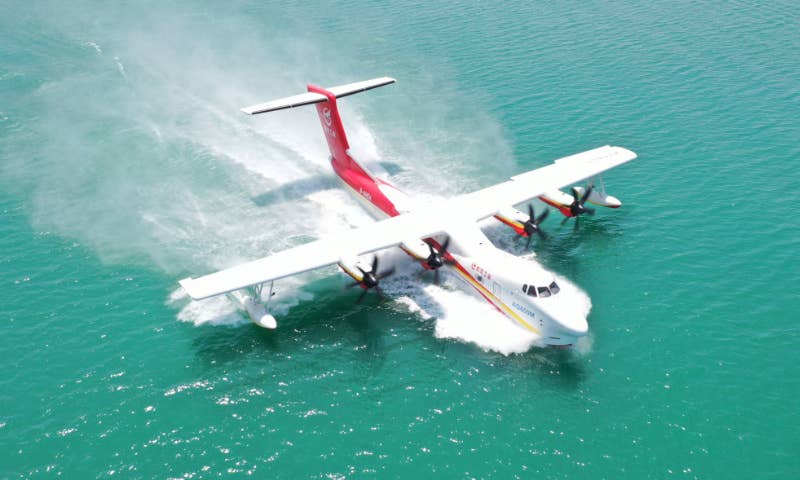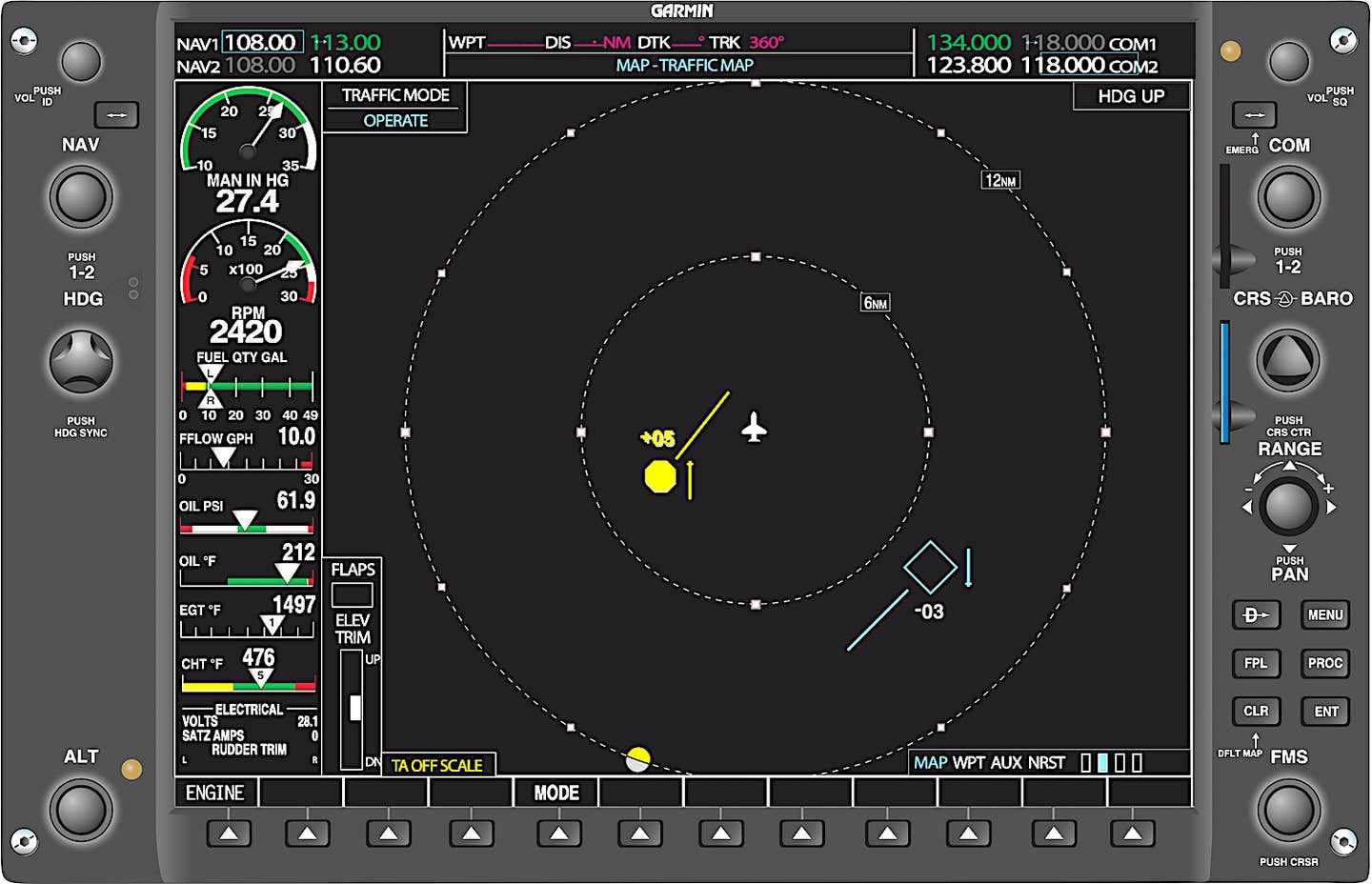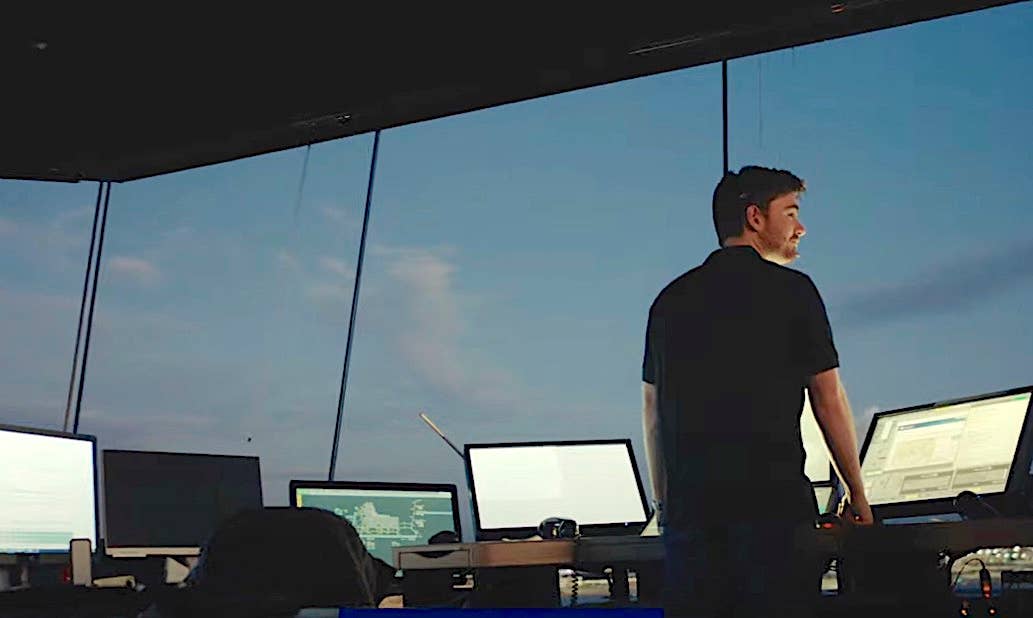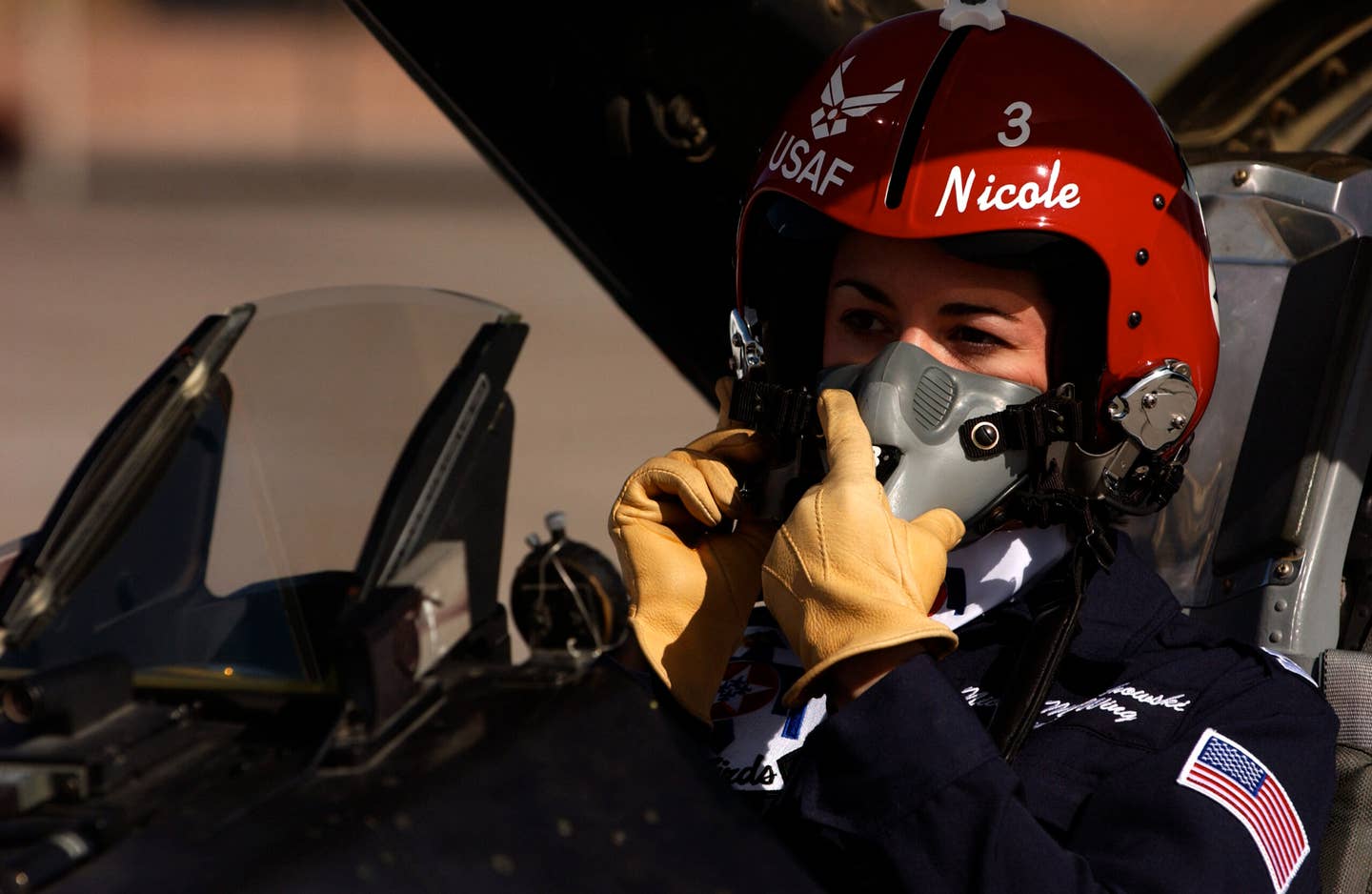Russian Airline Crew Lauded As ‘Heroes’ After Icing-Induced Emergency
All’s well that ends well, but Russian carrier S7 Airlines Flight 5220 certainly got off to a terrifying start—perhaps due to “counterfeit” deicing fluid. Shortly after takeoff from Magadan Airport,…
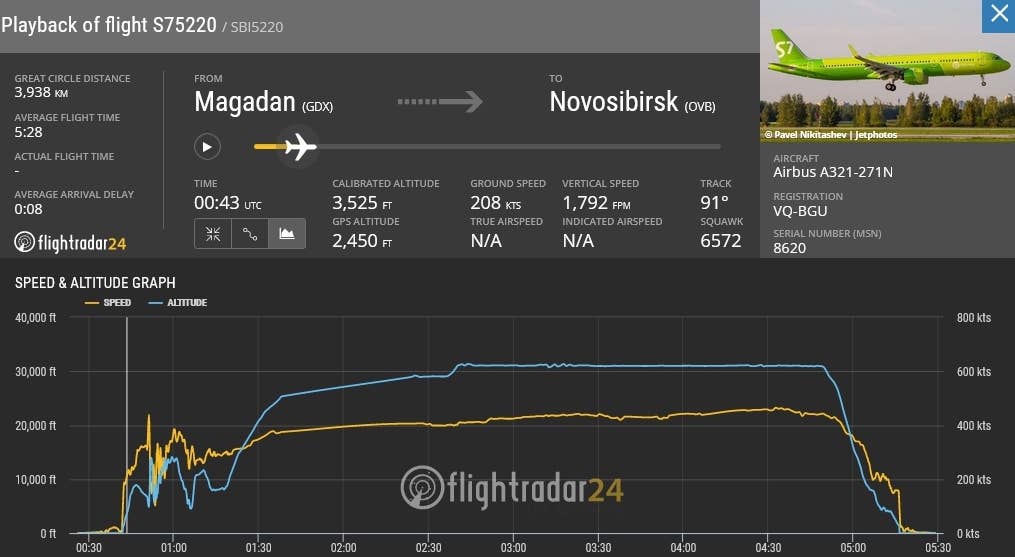
Image: FlightRadar
All’s well that ends well, but Russian carrier S7 Airlines Flight 5220 certainly got off to a terrifying start—perhaps due to “counterfeit” deicing fluid. Shortly after takeoff from Magadan Airport, just north of the Sea of Okhotsk in far eastern Russia, the Airbus A321neo with 199 passengers and seven crew members on board began to gyrate wildly. The crew declared an emergency due to airframe icing. According to a flight data recorder readout posted on social media (not yet confirmed to be from Flight 5220), the Airbus crew disconnected the autopilot shortly after takeoff. After a slight descent that began about five minutes after reaching an altitude of 8,784 feet, the single-aisle airliner spent the next seven minutes in chaos as “multiple flight parameters show rapid oscillations for about seven minutes,” according to a narrative posted on Kathryn’s Report.
“The pitch attitude oscillated with -23.9 degrees and +43.6 degrees being the most extreme values reached. In that period the aircraft rolled left and right with the extreme values being +49.8 degrees and -91.1 degrees.” The data published by Kathryn’s Report showed the aircraft rapidly climbing from 4,699 feet to 14,351 feet, then quickly descending to 5,084 feet. “From then on altitude remained difficult to control,” read the narrative, with the aircraft climbing back up to 13,748 feet and descending to 4,556 feet at an average rate of around 1,000 feet per minute.
Reports suggest the aircraft entered airspace with significant icing conditions. Multiple Russian news reports suggest that S7 Airlines “cannot rule out improper de-icing before the aircraft departed Magadan.” Some have gone so far as to speculate that the deicing fluid used at the airport was “counterfeit.”
The crew made two unsuccessful attempts to land back at the departure airport. It’s unclear whether the problem with landing there was the persistent icing or perhaps a fuel load that dangerously exceeded the maximum landing weight. But eventually, the crew was able to climb to and maintain a normal cruising altitude and continue westbound for a safe landing at Irkutsk five hours after takeoff (the original destination, Novosibirsk, was considered unreachable due to extensive flight time at low altitude while attempting the emergency landing at Magadan).
The flight crew is being hailed as heroes for their recovery from the low-altitude emergency.

